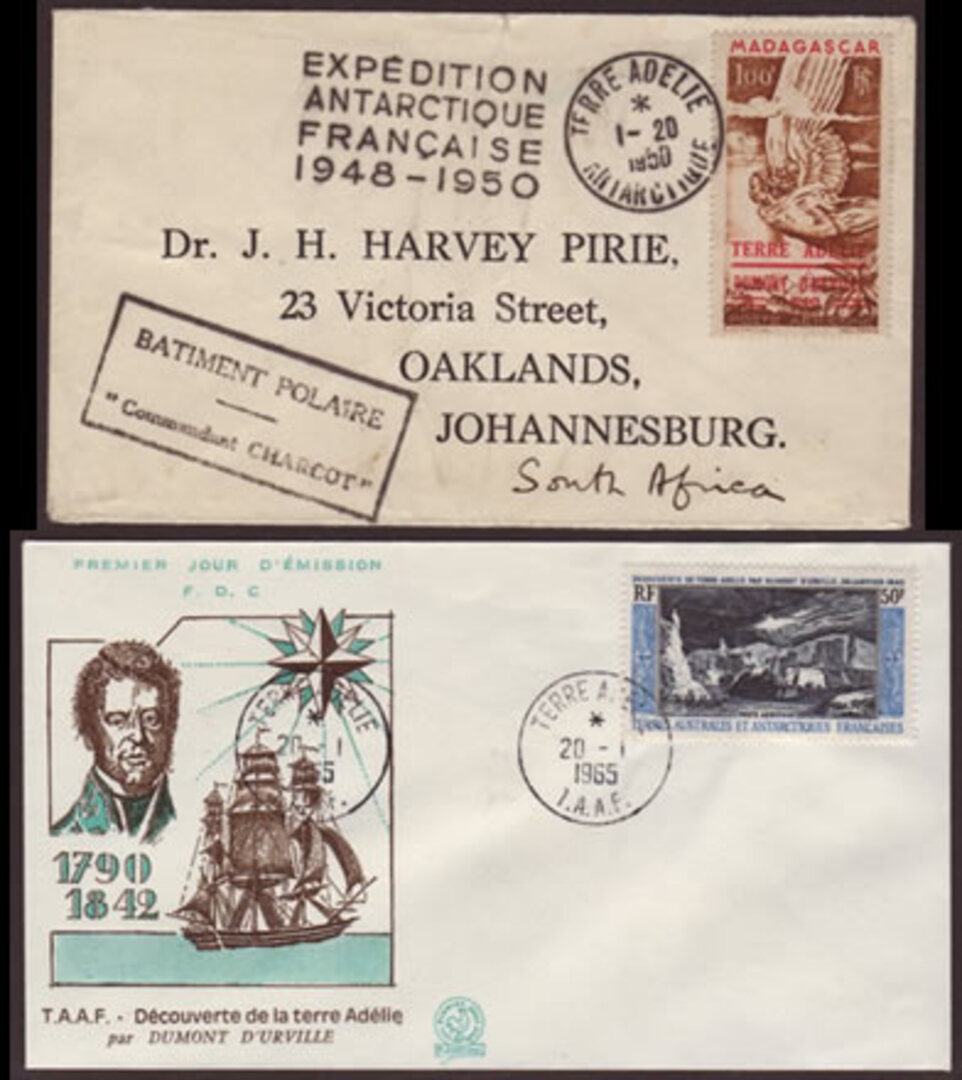The Postal History of Antarctica is a truly fascinating area for research and collecting. The pioneering explorers were household names to every school child - men like Shackleton, Scott, Amundson, Byrd all conjure up tales of heroic expeditions into the unknown, their mail home becoming extremely valuable due to the lack of postal services and small volume of letters to have survived. In time, many countries sent expeditions to establish scientific research bases, still in busy use today in studying the changes happening around the planet.
The more "modern" covers available to collectors include mail from the various Nations bases, with Australia, British (B.A.T.) New Zealand (Ross), France (T.A.A.F.) issuing their own postage stamps. Special postal markings, expedition cachets often accompanied by the signatures of team members, plus special markings from the ships that carried teams and their supplies to the bases all add to the story. Stamps and covers were often produced to raise vital funding for the Expeditions, this being the case for the famous Shackleton venture. The wildlife of the area is another subject worthy of collecting, many attractive stamps feature Whales, Seals, Penguins etc.
British Antarctic Territory
The United Kingdom has had a continuous presence in the far South Atlantic since 1833 when it reasserted sovereignty over the Falkland Islands. In 1908, the UK unilaterally extended its territory by declaring sovereignty over South Georgia, the South Orkneys, the South Shetlands, and the Sandwich Islands, and the territory known as Grahamland, situated in the South Atlantic Ocean. All these territories were to be administered as Falkland Island Dependencies from Stanley by the Governor of the Falkland Islands. In 1917, the wording of the claim was modified to include the whole sector stretching to the South Pole (thus encompassing all of the present-day British Antarctic Territory).
In 1943, at the height of World War 2, the UK undertook a military operation known as Operation Tabarin, to provide reconnaissance and meteorological information in the South Atlantic Ocean. This "secret" wartime project became the civilian Falkland Islands Dependencies Survey and later the British Antarctic Survey (BAS). BAS is responsible for most of the United Kingdom's scientific research in Antarctica. Several other nations began to stake claims to Antarctica, and in the 1950s the Antarctic Treaty was passed in 1961. In response, the UK transferred all its territory below 60°S (previously administered as part of the Falkland Island Dependencies) into the British Antarctic Territory, established by order of Council.
The British Antarctic Survey has two permanently staffed research stations in the Territory at Halley and Rotheram Signy was operated from 1947 until 1996 and now is only staffed in the summer. There are also two summer-only forward operating stations, at Fossil Bluff and Sky Blu. Faraday was maintained until 1996, when it was sold to Ukraine. Since 1996, the historic base at Port Lockroy on Goudier Island has been staffed by the UK Antarctic Heritage Trust during the Antarctic summer. Receiving about 10,000 visitors a year, it is one of the most visited sites on the continent. Argentine presence in the territory dates to the foundation of the Orcados Base, South Orkney Islands, in 1903. A number of other nations maintain bases in the territory, many in the South Shetland Islands.

 General
General
 General
General
 General
General